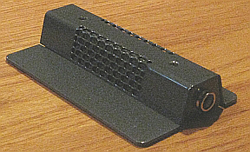One of the biggest live sound challenges is amplifying the voices of performers on stage in plays, musicals and operas. Solutions include outfitting them with headworn and lavalier microphones as well as capturing them with mics flown above the stage, mics on desk stands, shotgun mics, and floor mics. Here our focus will be on the latter approach, which offers some unique advantages.
As the name states, a mic (often more than one) is placed on the floor of the stage, usually near the front edge, to capture the voices. It’s also called an “area mic” because it picks up over a broad area and is also called a “boundary mic” because it is positioned on a boundary or surface.
Can a mic located on the floor produce quality sound? Yes. Let’s look at the technology ways to use floor mics effectively.
Backstory & Basics
Suppose we place a typical handheld mic in a desk stands on the stage floor. It’s near a hard, reflective surface. Sound travels from the source to the mic via two paths: directly and reflected off the surface (Figure 1).
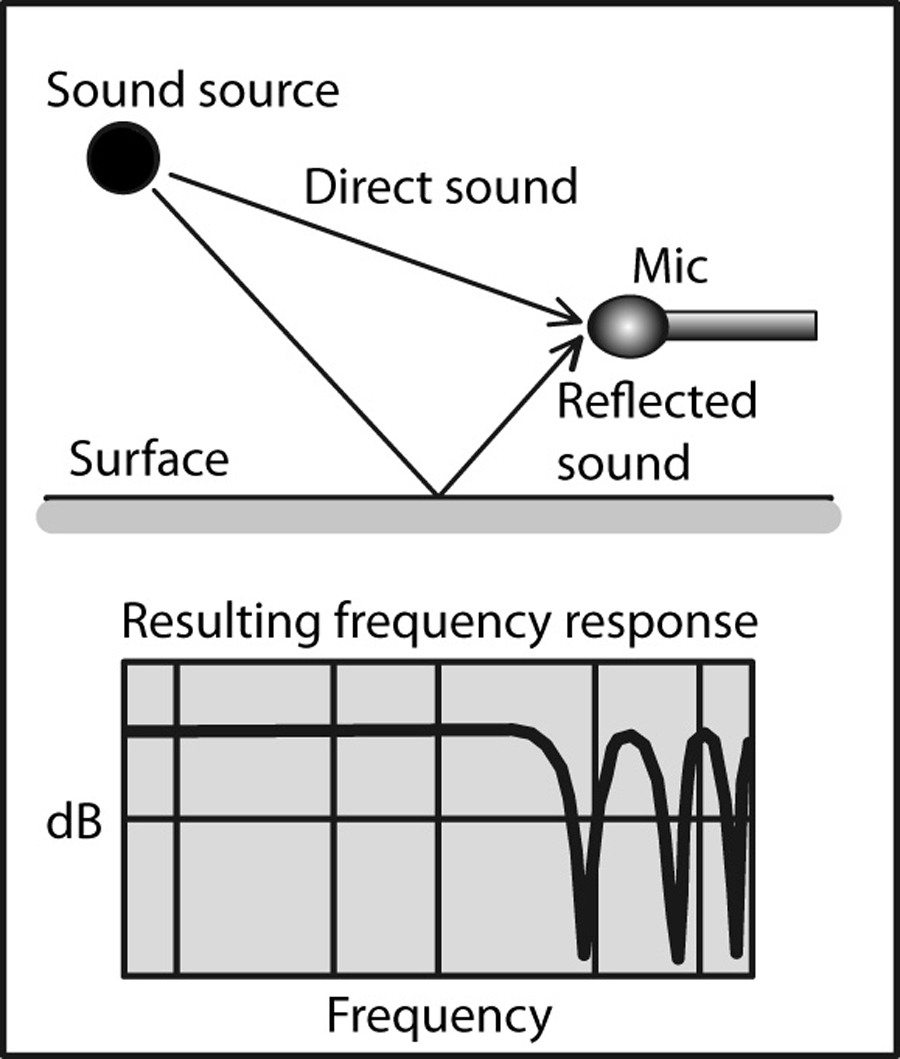
The reflected sound is delayed because it travels a longer distance than the direct sound. When the two sounds combine at the mic, this results in phase cancellations of various frequencies. Peaks and dips appear in the frequency response.
This is called comb filtering or a comb-filter effect. It colors the tone and lends an unnatural quality. To hear how it sounds, say “shhhh” about a foot from a mic while moving a panel toward and away from the mic. You’ll hear a swooshy jet-plane effect as the reflected path length changes. This is the comb-filter nulls moving up and down the frequency spectrum. The same thing happens when actors are picked up with a desk-stand mic. The tone of their voices changes when they move.
We could also lay a conventional mic on the floor, maybe inside of a foam block called a Mic Mouse (invented by Electro-Voice). But the diaphragm of such a mic is relatively large, with reflected sound traveling a slightly longer path to the center of the diaphragm than the direct sound. These sounds combine at the diaphragm and partially cancel high frequencies (Figure 2), and the result is a “darker” tonality, as if the highs were intentionally turned down.
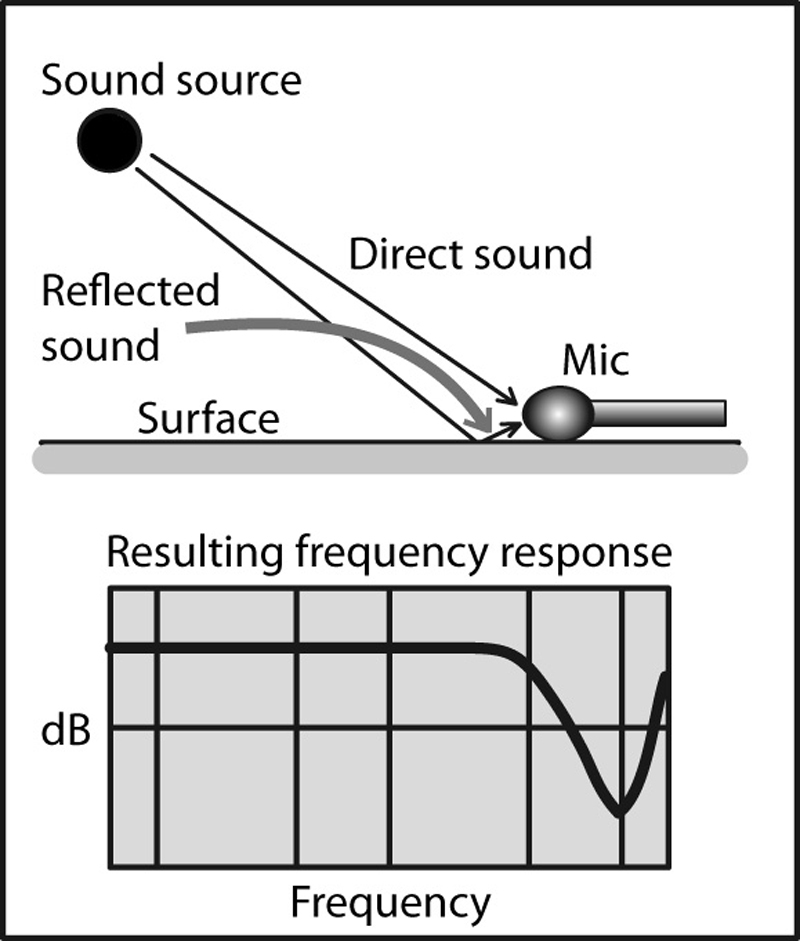
In 1985, a new design was introduced to prevent phase interference from surface reflections: the directional boundary mic. It uses a miniature capsule, about 1 centimeter in diameter, inside a rugged housing. The diaphragm is small enough so that any phase cancellations are above the audible range (Figure 3), resulting in a wide, smooth frequency response.
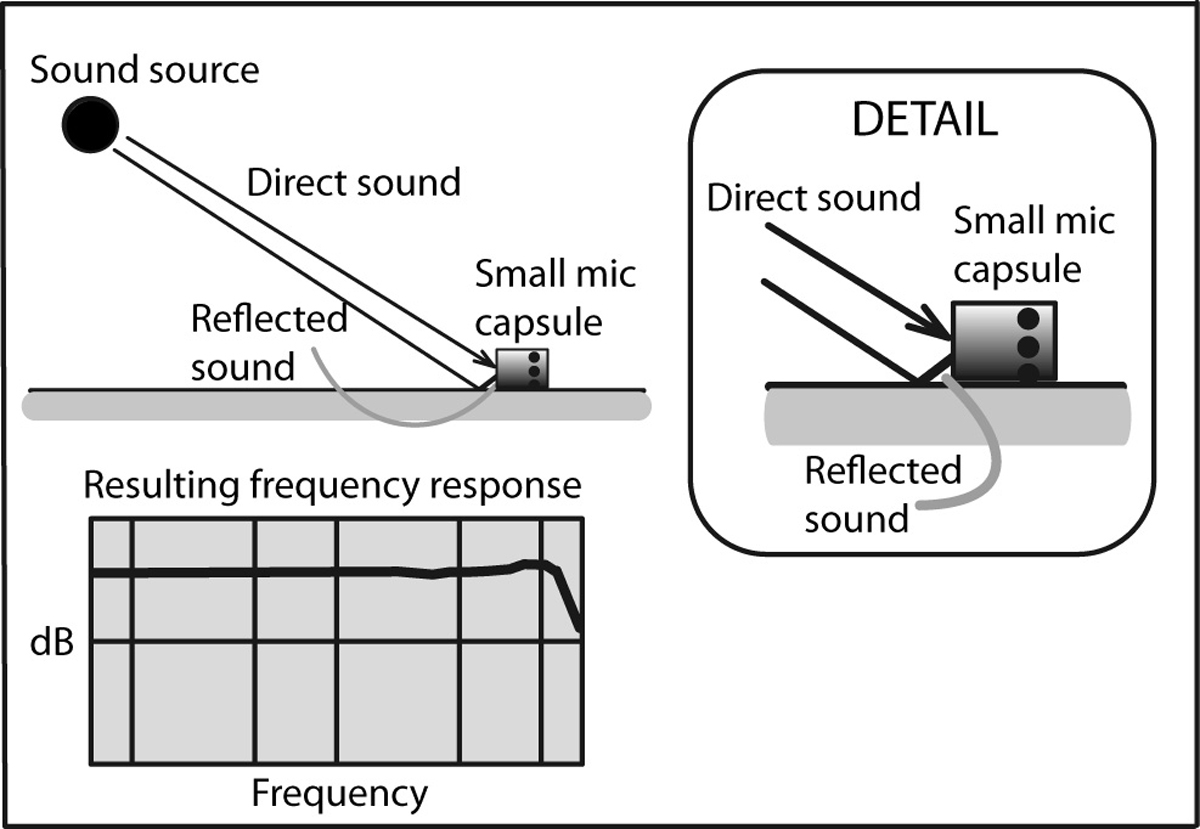
The Crown PCC-160 and Shure SM91 were the first mics of this kind. Unlike the Crown PZM (Pressure Zone Microphone), which uses an omnidirectional capsule facing down, the PCC-160 has a supercardioid capsule facing horizontally across the surface. Subsequently, numerous manufacturers came up with their own versions, most designed for conference table use.
An omni boundary design has a half-omnidirectional or hemispherical pickup pattern (Figure 4), capturing sound equally well from all around the mic.
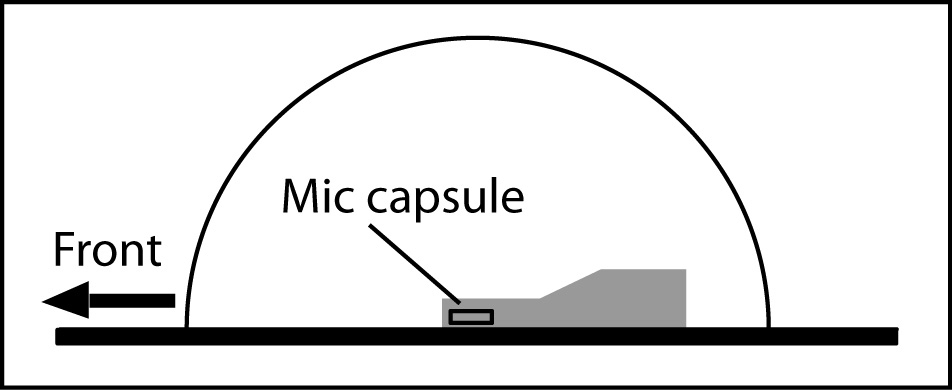
In contrast, a directional boundary design picks up sound mainly from one direction: in front of the mic over a broad angle. It rejects sounds to the sides and rear. It has a half-cardioid or half-supercardioid polar pattern – the capsule’s pattern is cut in half by the boundary (Figure 5).
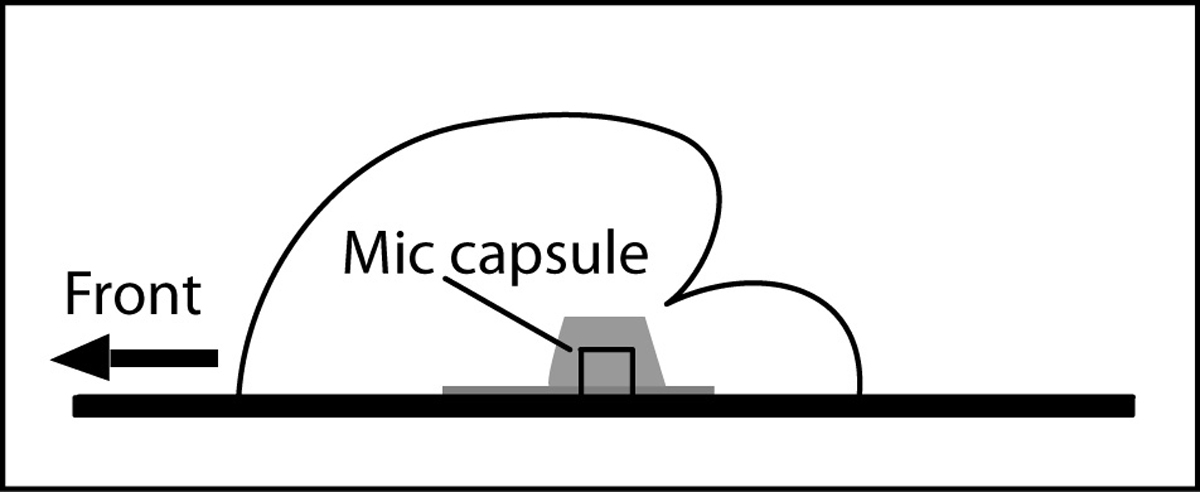
A directional boundary design provides more gain before feedback, less pickup of reverberation, and less pickup of sounds behind the mic, such as a pit orchestra in a theater. A supercardioid pattern offers the most rejection averaged over the entire space behind the mic, while the cardioid pattern has the most rejection of sounds that are directly behind the mic. Often, a single boundary mic can be deployed to capture the entire stage.
Additional benefits:
• The miniature capsule eliminates phase cancellations in the audible range to foster a clear, natural sound.
• Due to the coherent addition of direct and reflected sound, the mic’s sensitivity and signal-to-noise ratio are up to 6 dB more than an identical mic on a stand or hanging.
• With a single mic, the tonal quality does not change as the actor moves. Phase interference between multiple mics might cause tonal changes.
• The mic is small and inconspicuous, and is also less costly and simpler to use than deploying several headworn mics.
Downsides:
• The mic picks up footsteps more loudly than hanging or headworn mics.
• Less gain before feedback and clarity than headworn mics. Note that it can be quite adequate, however, if the house loudspeakers are far enough away.


